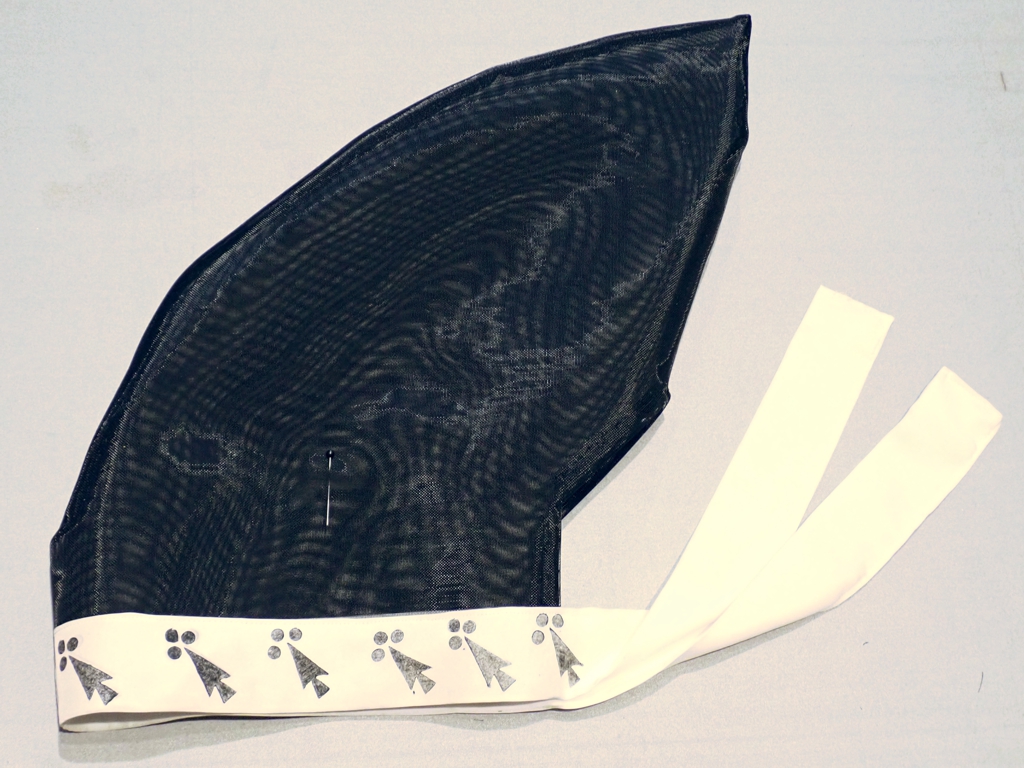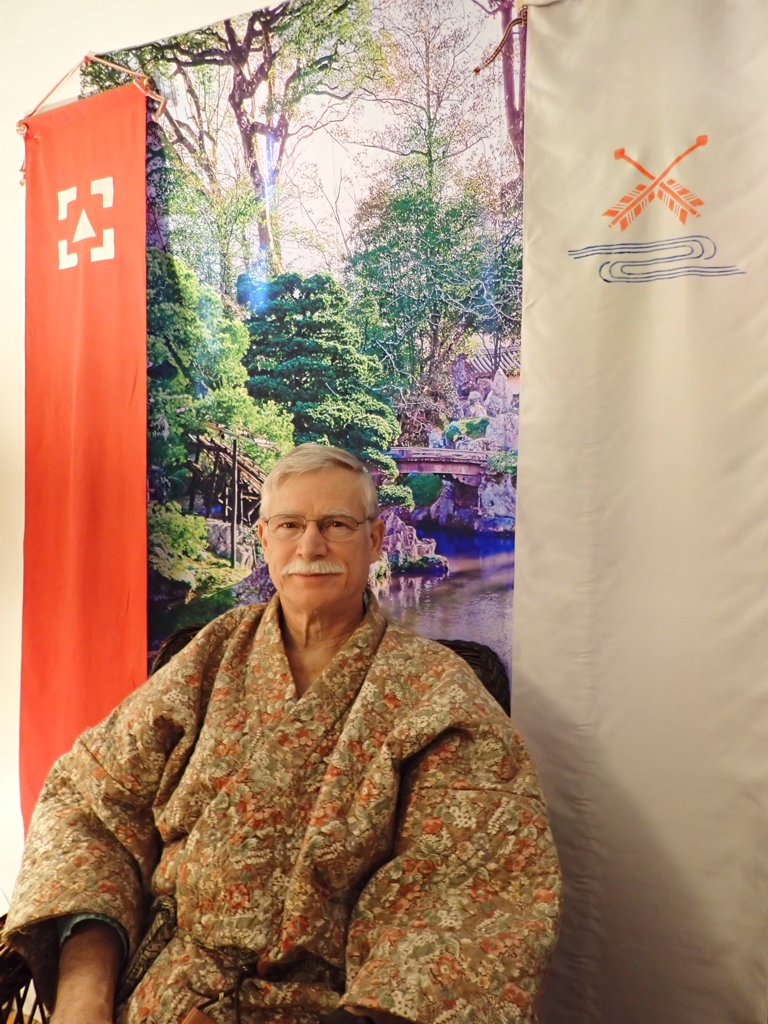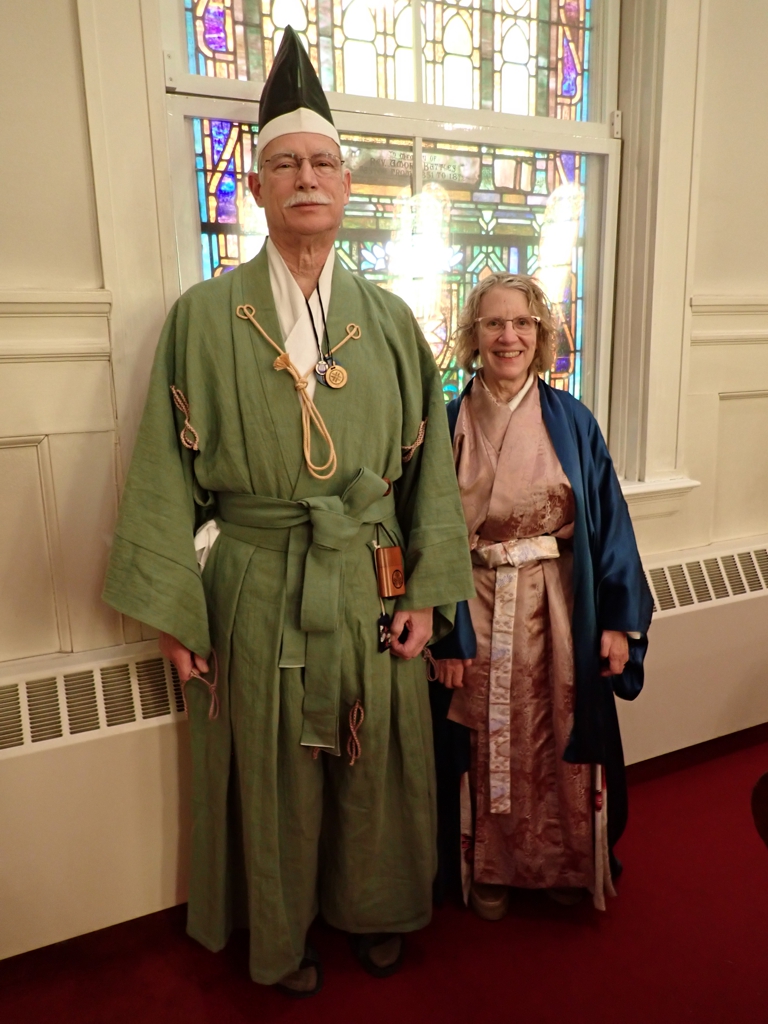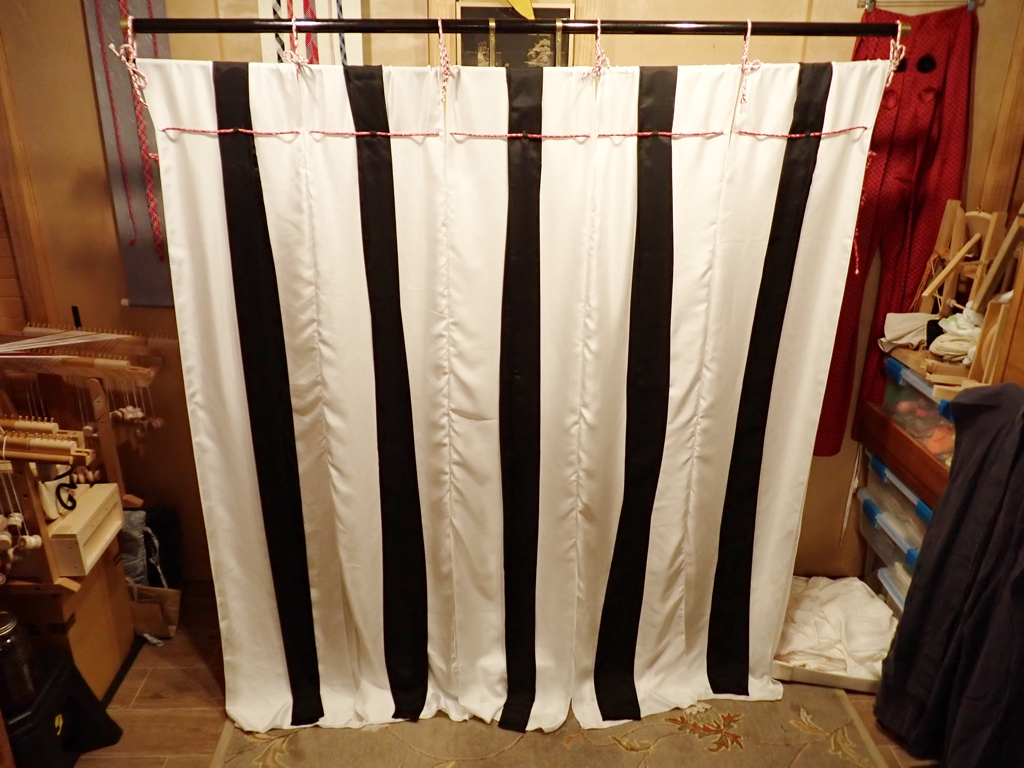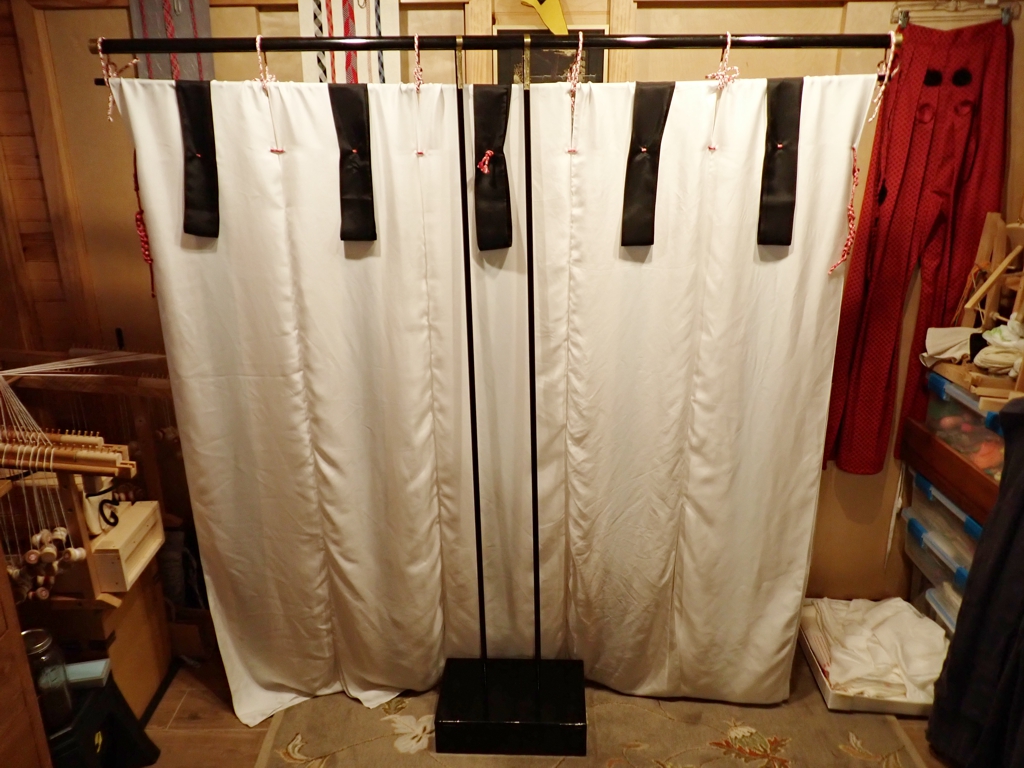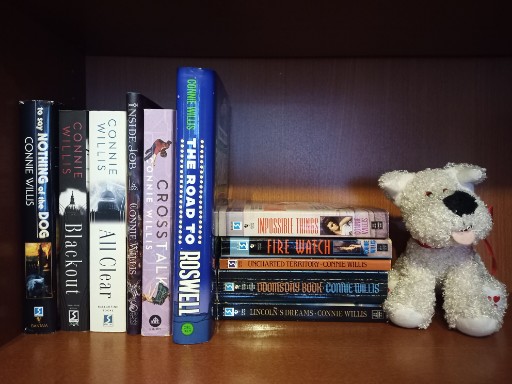Our friend Kusunoki Yoshimoto (or “Yoshi” as we call him) who lives in the East Kingdom of the SCA, received a writ for the Order of the Pelican. He’s a pretty good friend of ours, and we camp right next to him at Pennsic. He made Sharon’s crossbow and her first set of bolts, and he helped her figure out the best shooting style for her. He does a lot of service to the archery community in the East and elsewhere, and it was really good to see him recognized.
We were tapped to create a few items for his elevation. Sharon made his elevation garb, which was a full hitatare sugata including undergarments, and his “Pelican Cloak” which was styled as a dobuku coat. I wound up making a silk hata-jirushi banner with his heraldry and his “Cap of Maintenance” which was styled as a hikitate eboshi with ermine spots block-printed on the band.
The eboshi was so tall, the King had to stand on a bench to get Yoshi’s Pelican medallion around his neck!
Here is what everything looked like in action:
It was a wonderful event, and a great elevation. We were so happy for Yoshi’s elevation to the peerage, and to have our work be a part of it. Travel to Bangor, Maine and back was a terrible experience, but the day itself was wonderful.


